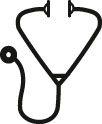Abstract

Defects in FAS mediated apoptosis lead to a rare autoimmune disease called autoimmune lymphoproliferative syndrome (ALPS), which is manifested by a variety of symptoms including chronic lymphoproliferation, splenomegaly and autoimmune cytopenia. ALPS is mainly caused by germline or somatic FAS mutations, but gene analysis is time and cost intensive. Therefore, a tool is needed to screen for patients that are likely to harbor such a mutation to reduce costs and allow a faster diagnosis and treatment. One hallmark of the disease is the pathognomonic accumulation of TCRαβ+ CD4-/CD8- double-negative T (DNT) cells, which show high mitotic activity and unique expression profile. In this study, we compared the immune phenotype of ALPS patients with germline or somatic FAS mutation (ALPS-FAS/sFAS, n=11), patients who fulfill ALPS diagnostic criteria without FAS mutation (ALPS-U, n=11), and patients with ALPS-like disorders (two major diagnostic criteria without further criteria or at least one major criterion and autoimmune cytopenia, n=22). In addition, healthy donors, patients with chronic autoimmune cytopenia (AC, n=9), and patients with chronic non-malignant lymphoproliferation (LP, n=9) with no other major or minor criteria for ALPS diagnosis were used as controls. ALPS-FAS/sFAS patients showed accumulation of DNT cells with increased mitotic activity, terminal differentiation and expression of CD45RA/CD38 compared to healthy donors, AC and LP patients. Using receiver operating characteristic analyses, we could demonstrate that Ki67 and CD45RA/CD38 expression within DNT cells clearly distinguish ALPS-FAS/sFAS patients and ALPS-U and ALPS-like patients. To further strengthen specificity and sensitivity of the test, we assessed whether combination of DNT cell frequency with one additional marker is useful in supporting ALPS diagnosis. We found that a combination of DNT cell frequency with the expression of CD38 and CD45RA or Ki67 is most efficient to predict FAS mutation in ALPS patients. Taken together, flow cytometric analysis of these signature markers is a highly effective tool to discriminate patients with ALPS-FAS/sFAS and ALPS-related diseases and may also be useful for monitoring of treatment efficacy.
Disclosures
Mackensen:Kite/Gilead: Honoraria; BMS/Celgene: Honoraria; Novartis: Honoraria; Miltenyi Biomedicine: Honoraria.
Author notes
 This icon denotes a clinically relevant abstract
This icon denotes a clinically relevant abstract
Asterisk with author names denotes non-ASH members.

This feature is available to Subscribers Only
Sign In or Create an Account Close Modal